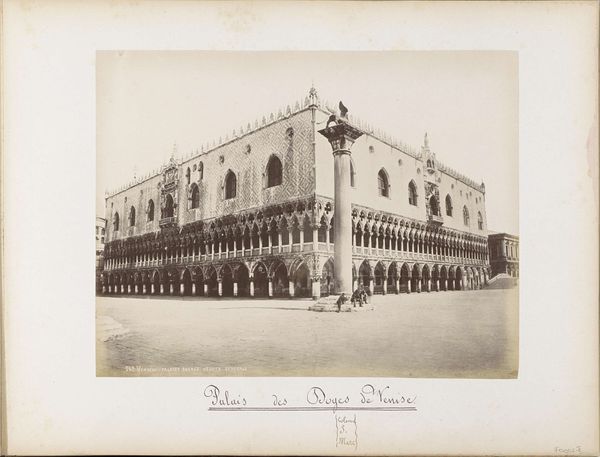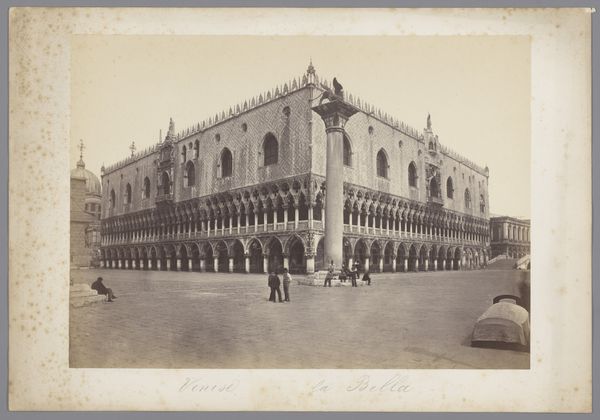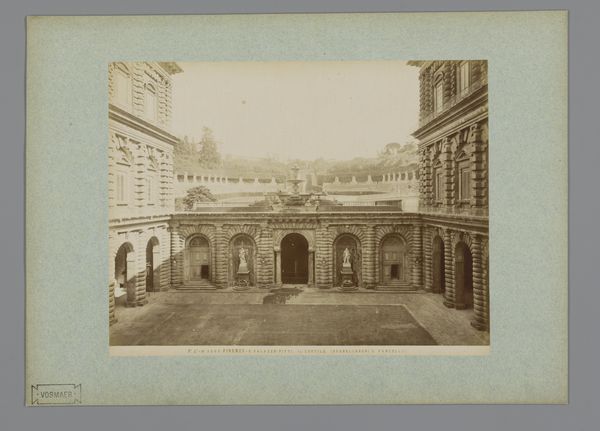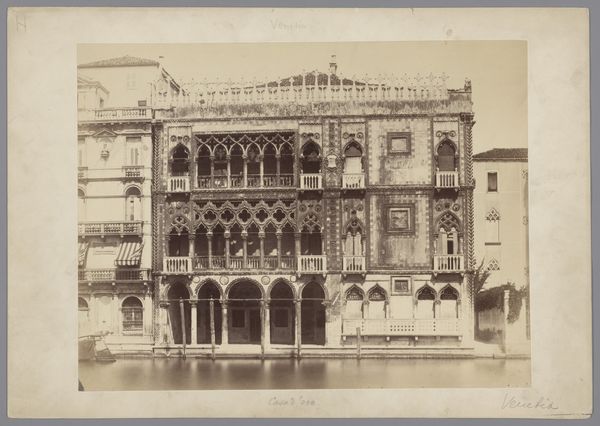
Dimensions: height 201 mm, width 248 mm, height 242 mm, width 327 mm
Copyright: Rijks Museum: Open Domain
Editor: This albumen print, taken sometime between 1880 and 1895 by Fratelli Alinari, captures the Doge's Palace in Venice. It’s aged to a beautiful sepia tone that almost feels like looking at a memory. The architectural detail is striking, but it also feels strangely deserted. What jumps out at you when you see it? Curator: The emptiness you perceive speaks volumes. It draws attention to the building's symbolic weight rather than the hustle of Venetian life. See how the meticulous rows of arches and the delicate tracery practically vibrate against the emptiness of the square? The Doge's Palace wasn’t just a residence; it was a physical manifestation of Venetian power and justice. Editor: Justice… that's an interesting interpretation! Curator: Think about it – the architectural symbolism alone tells a story. The lower arcade, grounded and accessible, suggests openness to the public. The upper loggia, with its intricate patterns, speaks to the complexities of governance, and the solid wall above implies the unyielding nature of the state. The repetition, the imposing scale, how do these resonate symbolically? Editor: So, it's not just a beautiful building but a deliberate message in stone? That changes how I see the emptiness – it's almost a stage, waiting for the drama of Venetian history to unfold. Curator: Precisely! The image encapsulates the Republic's aspirations for enduring power, revealing the continuous, constructed narrative of Venetian identity. What stories does it tell *you* now? Editor: Now, I see layers I completely missed before. It’s a photo, but it feels like an allegory of power frozen in time. Thanks, that’s given me a whole new perspective!
Comments
No comments
Be the first to comment and join the conversation on the ultimate creative platform.













